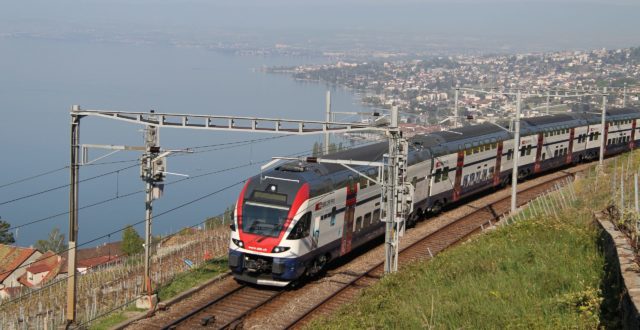Focus on safety, sustainability and reliability
The main objective of transport companies is to maintain a high level of services, where the infrastructure components have a vital role. The introduction of high speed networks and increased traffic levels require new technologies in railway infrastructure and trains, that must be obtained through a rigorous control of quality service and maintenance processes during their life of operation. Traction substations are probably one of the most important infrastructure components of the railway power supply systems due to their effect on the system safety as well as the reliability and quality of the service.
The railway industry is becoming increasingly competitive, and the sustainability enthusiasts are under pressure to make the trains safer, more reliable, cost-effective, and attractive to travelers. Railways have a reputation for being particularly challenging environments. This placed extreme demands on the equipment installed into their rolling stock and trackside applications. However, simply meeting these challenges, though essential, is not sufficient. At the same time, the equipment must also play its part in helping rail transport become an ever safer, more reliable, and attractive environment. Electrical equipment and circuits are especially important in the railway industry and protecting them is critical to guarantee passenger safety, reducing downtime, costs and delays arising from any defect or failure.
Due to space limitations, the electrical equipment is typically tightly packed into small enclosures, cabinets, or compartments, with units operating in very close proximity to one another. This can increase the incidence of spikes, transients and bursts in the power lines that can be protected by circuit breakers.
Basics of circuit breakers for railway and marine applications
The role of a circuit-breaker is very simple: it should switch-off, mostly referred to as “trip”, when an inconsistency is detected in the current. An inconsistency could be a short circuit causing a rapid rise in the current, or an overload situation in which demand is simply higher than supply. In both cases, the circuit-breaker must perform its job and disconnect the devices from the power system.
Circuit-breakers “trip” when the current “I” exceeds a specific value depending on the type of breaker and the value set for that breaker. However, the circuit-breaker will also trip when there is large change in current, this is called as di/dt, the change in current with respect to time. A graph of the di/dt for a 1.5kV, 3kA solid state circuit breaker for marine applications is illustrated in figure A.

The graph shows the time it takes to trip “tbreak” in microseconds, often referred to as “breaking time”, corresponding to di/dt. The larger the di/dt, the faster the circuit-breaker trips. It is clear from the graph that it takes approximately 8 μs to trip at a di/dt of 1000 A/μs.The breaker will also trip when the demand for current rises above the threshold value. For example, a circuit-breaker set for 3000 A should trip when the current exceeds that value. High Speed circuit-breakers typically trip in 10 μs or less.
More about our solid-state DC breaker
Learn more about how our solid-state DC breakers offer optimal protection for your DC grid. View all our available solid-state DC breakers in our product catalog.

For marine applications where systems are built with very low inductance, a fast-acting IGBT switch is ideal. For traction applications, it is a different story. Traction systems are built with higher inductances with IGCTs where slow rise of di/dt is allowed which results in reduced speed combined with much lower on state losses.
“The railway industry is becoming increasingly competitive, and the sustainability enthusiasts are under pressure to make the trains safer, more reliable, cost-effective, and attractive to travelers.”
Circuit-breakers are manufactured with extreme care as per specific standards. On the other hand, these devices have been operational in the field for a long time under various conditions and comprise of mechanical parts. Can you expect the circuit-breaker to act as per its initial manufacturing settings after 30 years? Needless to say, that regular research and development of circuit-breakers is needed for proper system selectivity. The question then is: how do we make sure that it is done in such a way that it would produce excellent and predictable results?
In the past years, there were just two options when it came to specifying power circuit breakers: oil-filled or air. Today, with well-established technologies for protecting and interrupting methods, the application of circuit breakers is sometimes an afterthought. Although 2kV-38kV class of AC air circuit breakers have virtually disappeared from the scene, they still play an important part in the 250V-2000V class of equipment, especially in AC and DC traction power systems.
Numerous advantages of DC circuit breakers to the railway operation
DC distribution systems bring numerous advantages to the railway operation, for example, higher flexibility and redundancy. In many DC railway substations short circuit current level has been the restricting aspect for expanding or renewing these systems. In addition, advancements in DC traction technology and the ever-increasing equipment ratings have resulted in more complex and powerful electric traction networks. It is therefore also more difficult to effectively design the circuit breakers, particularly where direct current is applied. Traditional DC circuit breakers force the current to reduce and extinguish it by means of an opposing arc voltage. The fundamental issue related to the DC circuit interruption is the absence of a natural current zero. widely used air magnetic circuit breakers have suffered mainly from its breaking action, long fault clearing time, short lifetime, contacts wearing and high maintenance costs which results in reduced availability and downtime.

Recent developments in DC technologies and renewable energy increased the interest in building large DC-grids. To have full control over faults and increase the reliability of such a grid, DC-circuit breakers will be required. Due to the low impedance of the DC-grid, the DC-circuit breaker needs to be faster than conventional AC-circuit breakers. The hybrid solution, combining a mechanical switch with power semiconductors, shows promising features to fulfil the demands of such a circuit breaker. Click here to read more about it in my previous blog.
Conclusion
With the ever-changing traction market, a fit for future circuit breaker needs to be developed that can ensure system safety. With the recent developments in new and advanced semiconductor-based circuit breakers, the road towards a sustainable future of railway traction looks very promising.
Schedule a speed date
High-speed DC circuit breakers are critical elements in the railway infrastructure. They will ensure that the damage is limited to an absolute minimum when things go wrong. To ensure making the best choice in terms of safety, performance and cost-effectiveness, proper selection of a right circuit breaker is crucial. Our specialists are here to help you find the best solution.
Schedule a speed date and discover all the possibilities of our solid-state DC breakers for railway applications.
A Speed date with Astrolkwx






